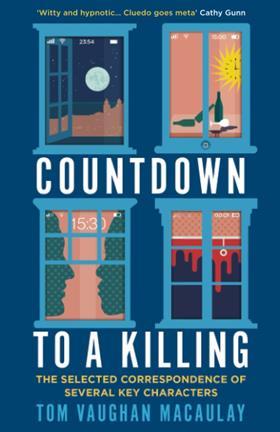Epistolary novel is right on message
Countdown to a Killing
Tom Vaughan MacAulay
£8.99, Red Door Press
★★★★✩
I found Tom Vaughan MacAulay’s debut novel Being Simon Haines difficult to put down. The solicitor’s follow-up novel Countdown to a Killing is equally compelling.
The book is a modern take on an epistolary novel. I was accustomed to this device having studied the 18th century Les Liaisons Dangereuses by Pierre Choderlos de Laclos at university. Instead of de Laclos’ exchange of letters between two amoral and narcissistic protagonists forming the backbone of the plot, we have an ensemble of modern-day correspondence taking the form of emails and WhatsApp messages, with the odd handwritten script. What we do not have is a dialogue of communication between parties. Instead, we have an interweaving of messages which appear to never reply to each other. One might expect even minor characters to be represented in their messaging but not so. Even some key individuals are noticeably silent.
Meanwhile, we still have an omniscient narrator who chimes in at opportune moments throughout the text. Thus, we get a ‘brief editorial intervention’ at a key moment in the selected correspondence.

I admire the consummate daring of the author in using the epistolary form for his novel. At the same time, I found that the structure took a little getting used to. But what is the book about? Well, it is not a giveaway to say that the correspondence begins in August 2016 and ends on the night of a murder.
The book is set in various locations: Palermo, London and Huddersfield. We are first introduced to one of its main characters, Wen Li, resident of Finsbury Park, on the cusp of starting a new job at notarial firm Curtain and Curtain, despite her obsessive-compulsive disorder. We are then taken to the first letter of Lomax Clipper, returning to this same firm, leaving behind Aurora with whom he has more of an off than on relationship. Lomax is a wannabe writer who manages to submit to a publisher the opening chapters for his work ‘And Later on Easter Island’ by the end of the book. A flurry of rejections from literary agencies does not deter him from his craft, we are told by the narrator.
The characters are fully and subtly sculpted. Their interplay is well choreographed. The dynamic between Wen Li and Clipper has us keenly following their relationship, wondering if it will blossom into a romantic one and, if so, when. But Wen has other suitors. Just which way will she turn? They have one key thing in common and that is an utter dislike of their boss, Julian Ponsonby.
Ponsonby has his own crosses to bear. He is in the throes of bitter relationship breakdown with his lover, Toby Eslin. Moreover, his father will not recognise his sexuality. Julian seeks to emulate Lomax in following him to Italy and trying to meet up with him.
The narrative takes place over a year and ultimately converges on Via Lungarini on 1 September 2017. But who will be the murdered and who will be the murderer?
All in all, an excellent tour de force: MacAulay has done it again.
Tony Roe is a family law solicitor and arbitrator at Dexter Montague LLP





























No comments yet